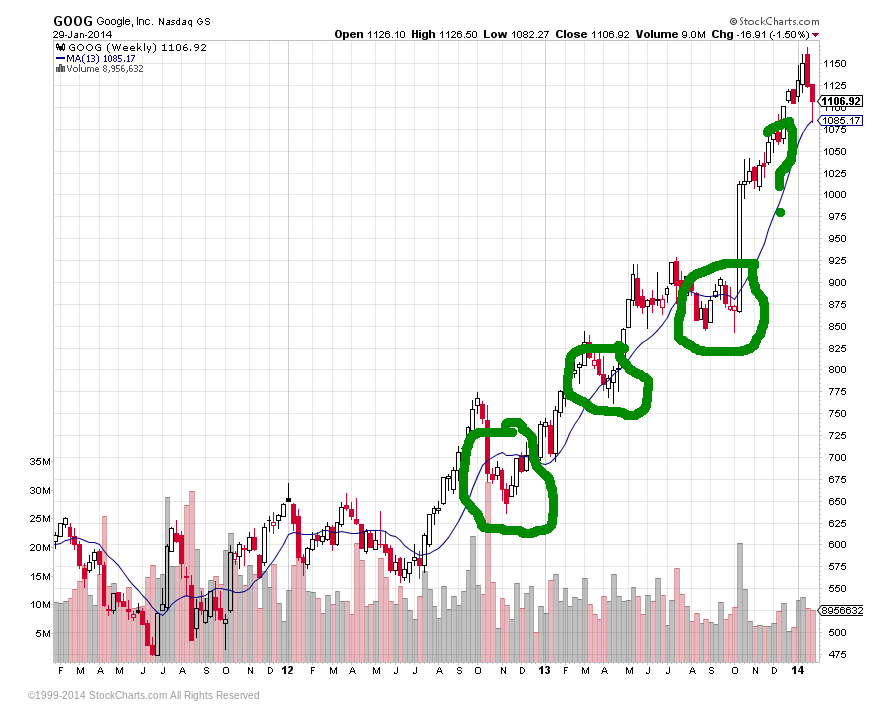When a company’s name becomes a verb it’s usually a good thing. When you put a bunch of computer nerds together, you get ideas that are as crazy as the stock price of the company. Is Google still the most prominent internet presence? Or has the recent wave of acquisitions and futuristic projects become a distraction from advertising revenue?
Google pays for its bills through advertisement revenue generated by its search engine. About 68% of its market cap comes from PC search and mobile search. About 9% comes from YouTube. Everyone is guilty of contributing to those figures since it is almost an instinct or habit to use Google or YouTube to search for something, or anything that someone has taken the trouble to post on the internet.
While that business has been conquering the internet, Google has been in the news more for its ambitious ventures than the simple google search page would lead you to believe. Google has projects such as the Google Glass Computer Eyeware, self driving cars, and recently for buying Nest, the automated thermostat and smoke detector company. What do these projects have to do with their bread and butter of search and ad revenue? Good question.
Google has also engineered a number of products and services that compile so much information that it is beyond staggering. The idea is that through algorithms and internet “paper trails” Google can target advertisements effectively. The Android platform for smart phones and tablets has been a tremendous success proving to be a worthy competitor to the iPhone and iOS and helping to send Blackberry the way of the palm pilot. A host of other web services like mail, productivity software à la Microsoft office, Chrome web browser have all done their part to become ingrained in the everyday life of over 425 million users, 5 million businesses and 66 of the top 100 Universities.* That surely helps their cause in generating enough data to figure out what is popular in the world and how to make sure that every website you visit has advertisements for the obscure winter boots you once searched for a month ago. Google also has the innovative intellectual firepower to achieve all of this.
However, sometimes it doesn’t always work out that way. Google purchased Motorola Mobility less than two years ago for USD$12.5 Billion. Yesterday it dumped it to Lenovo for USD$2.9 Billion. There were some positives in the acquisition, such as the patents and a small research group staying behind at Google that is working on some pretty creative projects. The patents are important because in the litigious world of intellectual property you need an arsenal of patents to keep things like Android going. Sometimes the ambitious aspirations of Google can be too much to handle and too much for investors to stomach. Do you remember the Nexus Q and Google TV? Exactly.
With the recent downturn in equities, Google has just touched one of those support levels where it tends to get confused for a short while and then picks up. So it is an interesting crossroads to be at.
 Chart Courtesy of StockCharts.com
Chart Courtesy of StockCharts.com
Since Google already knows everything let’s make their job easier by summarizing some post earnings statistics.
Assuming Google is trading at USD$1130 and using recent statistics:
The average move in either direction is $72.20. The largest move in the positive direction has been $146.00 and $98.90 in the negative direction. The minimum it has moved in either direction has been $17.60. Of the 13 previous earnings reports, Google has ended the week up 7 times.
Make sure to manage your expectations on any trade. Always think about how your trade fits in the big picture of what’s going on around it.
Good luck and trade rationally.
*Source TechCrunch

